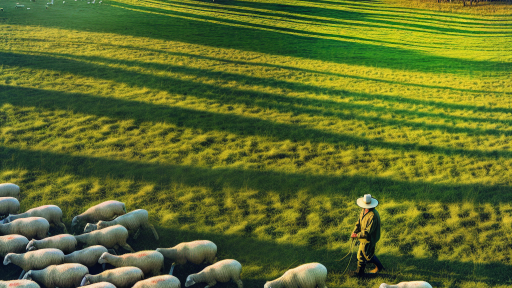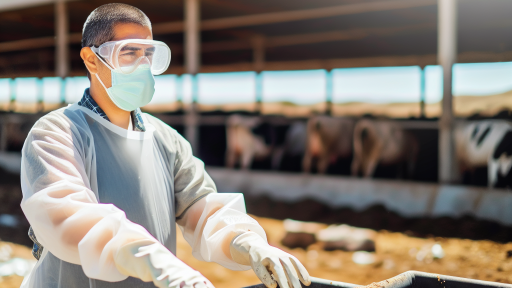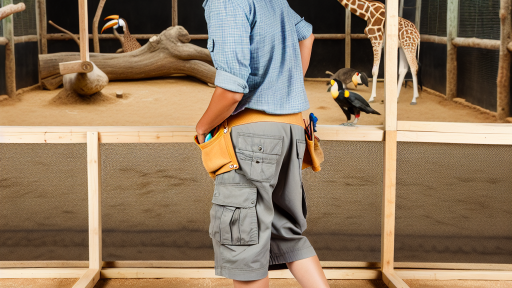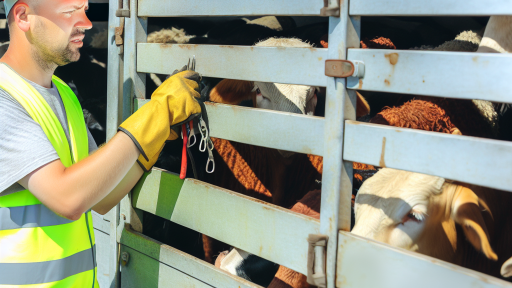Assessing Farm Infrastructure for Livestock Transportation
Evaluating Road Access
Your farm’s roadways must support heavy vehicles.
Ensure the routes are well-maintained and clear.
Inspect for any sharp turns or low overhangs.
These factors affect the ease of livestock transport.
Checking Loading and Unloading Areas
Designate a specific area for loading and unloading.
This space should be spacious and free from obstacles.
Install non-slip surfaces to enhance safety.
Visibility is crucial during these operations.
Make sure the area is well-lit for night-time activities.
Assessing Fencing and Containment Systems
Examine your fencing for stability and height.
Strong fencing prevents livestock from escaping.
Utilize gates that open smoothly and securely.
Check that all enclosures are in good repair.
Ensuring Water and Feeding Stations
Livestock require access to fresh water at all times.
Ensure watering stations are easily reachable.
Transform Your Agribusiness
Unlock your farm's potential with expert advice tailored to your needs. Get actionable steps that drive real results.
Get StartedProvide adequate feeding space to reduce stress during transport.
A well-fed animal is less likely to become agitated.
Evaluating Overhead Structures
Look out for any structures that pose risks.
Example hazards include low-hanging branches or wires.
Clear these obstacles from common pathways.
Enhance safety by marking potential hazards clearly.
Consulting with Professionals
Sometimes expert advice is invaluable.
Consider hiring a farm consultant for a thorough assessment.
They can provide insights specific to your operation.
Using their expertise promotes better planning and safety.
Understanding Transportation Regulations and Guidelines
Importance of Compliance
Compliance with transportation regulations is crucial for livestock welfare.
All farmers should understand the laws governing livestock transport.
Neglecting regulations can lead to legal penalties and animal welfare issues.
Researching Local and National Laws
First, research local regulations that apply to your farming area.
Different states may have specific rules regarding transportation.
National guidelines also influence transportation practices.
Consult resources such as the USDA for comprehensive regulations.
Licensing and Certification
Obtain the necessary licenses for transporting livestock.
Ensure your vehicles are certified for animal transport.
Various organizations provide certifications to meet regulatory standards.
Animal Health and Safety Standards
Know the health requirements for transporting livestock across state lines.
A veterinarian can help ensure that animals are healthy for transport.
Documentation of health checks may be required at checkpoints.
Documentation and Record Keeping
Maintain accurate records of transportation activities.
Showcase Your Farming Business
Publish your professional farming services profile on our blog for a one-time fee of $200 and reach a dedicated audience of farmers and agribusiness owners.
Publish Your ProfileLog the details for each trip, including dates and destinations.
Keep health certificates and permits organized and accessible.
Preparing for Inspections
Be ready for inspections by regulatory agencies during transport.
Ensure your transport vehicles meet health and safety standards.
Familiarize yourself with inspection processes to avoid delays.
Understanding Liability and Insurance
Know your liability as a livestock transporter.
Consider acquiring insurance that covers livestock transport activities.
Evaluate coverage options to protect against potential losses.
Creating a Livestock Transport Plan: Step-by-Step
Assess Your Livestock Needs
Begin by evaluating the specific needs of your livestock.
Consider factors such as species, age, and health conditions.
For instance, young animals may require special handling methods.
Furthermore, sick or injured animals need extra attention.
Plan Your Transportation Route
Select a safe and efficient route for transportation.
Identify potential hazards along the way, such as busy roads.
Additionally, check for rest stops where animals can be monitored.
Be prepared for any detours that may arise.
Choose Appropriate Transport Vehicles
Next, select vehicles suited for your livestock type.
Different animals may require various transport systems.
For larger livestock, trailers with proper ventilation are essential.
Ensure vehicles are clean and free from any harmful materials.
Gather Necessary Documentation
Compile all required documentation for transport.
This may include health certificates and transport permits.
Be aware of local regulations regarding livestock transport.
Keep all paperwork organized and easily accessible.
Prepare Your Livestock for Transport
Prior to transport, acclimate your livestock to the vehicle.
Familiarization reduces stress during the trip.
Ensure they are fed and hydrated before departure.
Moreover, inspect all animals for injuries before loading.
Monitor Animals During Transit
While in transit, consistently monitor the health of your livestock.
Check for signs of stress or discomfort regularly.
Make scheduled stops to allow animals to rest and hydrate.
Adjust the environment as necessary to ensure comfort.
Post-Transport Care
After arrival, provide immediate care for your livestock.
Check them for injuries or signs of stress from transport.
Offer fresh water and food to facilitate recovery.
Finally, give them time to acclimate to their new environment.
Uncover the Details: The Role of Genetics in Meat Quality Improvement
Preparing Livestock for Transportation
Health Checks
Start by conducting thorough health checks on your livestock.
Look for any signs of illness or distress.
Make sure each animal is in suitable physical condition.
Showcase Your Farming Business
Publish your professional farming services profile on our blog for a one-time fee of $200 and reach a dedicated audience of farmers and agribusiness owners.
Publish Your ProfileCheck for injuries that might affect transportation.
Consult a veterinarian for necessary vaccinations.
Keep detailed records of health checks for future reference.
Timely checks ensure that you transport only healthy animals.
Documentation
Prepare all necessary documentation before transport day.
Gather health certificates from your veterinarian.
Each animal may require proof of vaccination and health status.
Ensure that you have transport permits if required by law.
Prepare records that include identification for each animal.
This may include tags or microchip details.
Organizing documents helps avoid delays at checkpoints.
Feeding and Watering Plans
Develop a feeding and watering plan for the journey.
Provide enough food and water for all animals being transported.
Consider any dietary restrictions or preferences.
Offer water to the animals shortly before departure.
This helps keep them hydrated during transport.
Plan for feeding during longer trips to ensure their well-being.
Transportation Preparation
Prepare the transportation vehicle in advance.
Clean and disinfect the animal transport areas regularly.
Check to make sure there are no hazards inside the vehicle.
Ensure adequate ventilation to maintain a comfortable environment.
Familiarize animals with the vehicle before the trip if possible.
This minimizes stress when loading them on transport day.
Secure compartments will help prevent movement during transit.
You Might Also Like: Goat Health Management Tips for Farmers
Selecting Appropriate Transport Vehicles for Different Types of Livestock
Understanding Transportation Needs
Transportation needs vary based on the type of livestock.
Different species have unique space and comfort requirements.
Understanding these needs guides your vehicle selection.
Choosing Vehicles for Cattle
Cattle require spacious vehicles due to their size.
Flatbed trucks are suitable for loading cattle with ramps.
Enclosed trailers protect them from harsh weather.
Ensure the interior has adequate ventilation for comfort.
Selecting Vehicles for Poultry
Poultry transport requires specialized crates or trucks.
Consider vehicles with proper ventilation systems.
Ensure crates are spacious enough to minimize stress.
Use lightweight materials to facilitate easier handling.
Transporting Swine
Swine require sturdy and secure vehicles during transport.
Pigs are prone to stress, so minimize movement during transit.
Use hog trailers designed specifically for this purpose.
Ensure the flooring provides good traction for their safety.
Showcase Your Farming Business
Publish your professional farming services profile on our blog for a one-time fee of $200 and reach a dedicated audience of farmers and agribusiness owners.
Publish Your ProfileConsiderations for Sheep and Goats
Sheep and goats fit well in smaller, secure trailers.
Ensure proper separation to prevent aggressive behavior among them.
Consider vehicles with air circulation for their comfort.
Use non-slip flooring to help prevent injuries during travel.
Evaluating Vehicle Condition
Before transporting livestock, inspect the vehicle carefully.
Check for any damages that could cause safety issues.
Ensure the vehicle is clean to maintain animal health standards.
Regular maintenance is essential to uphold vehicle reliability.
Complying with Regulations
Understand the local regulations regarding livestock transport.
Compliance ensures the safety of both animals and drivers.
Familiarize yourself with transport permits required by law.
Noncompliance may lead to legal penalties or fines.
Gain More Insights: Marketing Strategies for Selling Farmed Fish Successfully
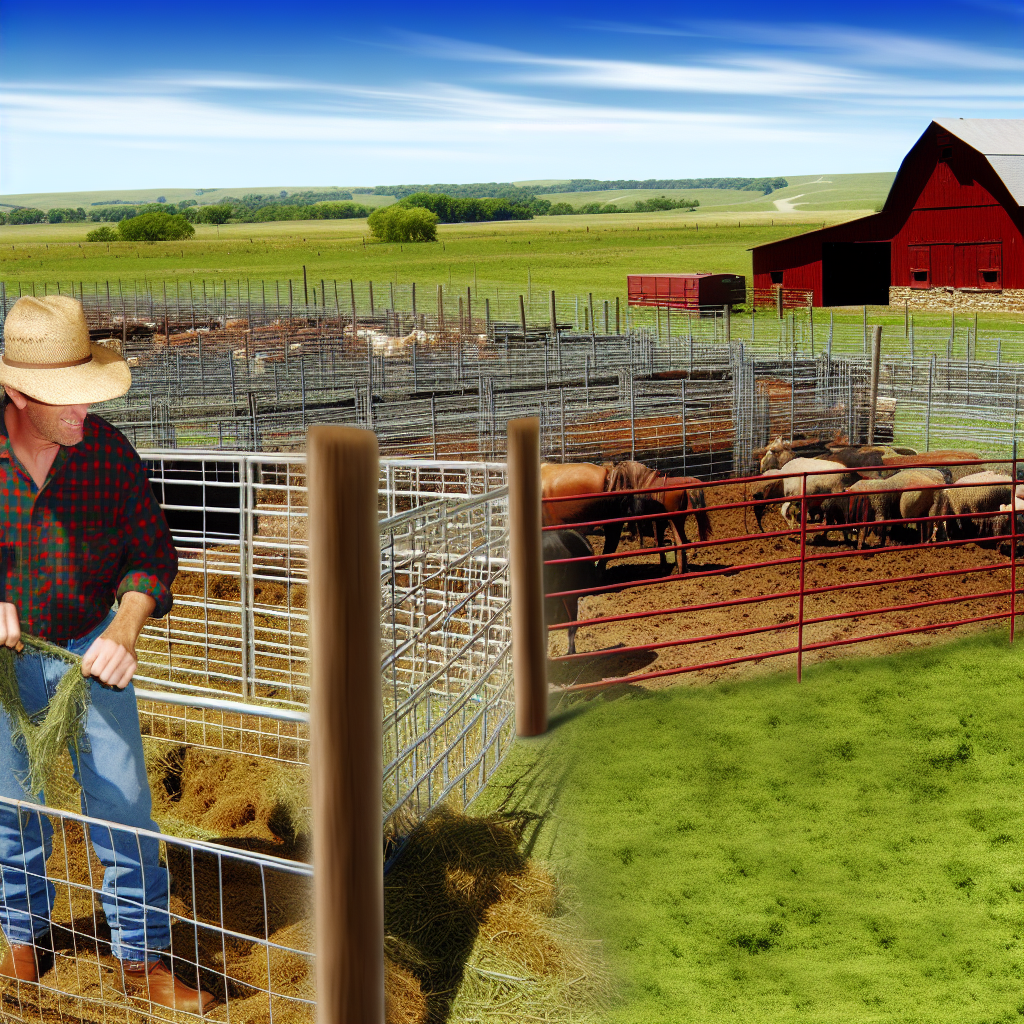
Ensuring Proper Nutrition and Water Supply During Transport
Planning Ahead for Nutritional Needs
Prior planning is essential for livestock nutrition during transportation.
Calculate the nutritional requirements based on the type and age of the livestock.
Consult a veterinarian or animal nutritionist for personalized advice.
Gather appropriate feed types to meet these nutritional needs.
Provide high-energy feeds to sustain energy levels during travel.
Hydration Strategies for Livestock
Access to clean, fresh water is crucial during transport.
Plan for water access at regular intervals during the journey.
Consider using water transport systems to facilitate hydration.
Check the livestock’s water intake prior to departure.
Monitor animal health to identify dehydration signs before travel.
Adjusting Feeding and Watering Schedules
Modify feeding schedules based on the length of the trip.
Feed livestock shortly before departure to minimize digestive issues.
Provide small amounts of feed during long trips to help maintain energy levels.
Delaying larger meals can reduce the risk of motion sickness.
Emergency Preparations
Always prepare for unexpected situations during transport.
Carry extra feed and water in case of delays.
Have a first-aid kit ready for any health emergencies.
Ensure a plan for emergencies, including contact information for veterinarians.
Be prepared to address any signs of stress or illness quickly.
See Related Content: Best Practices For Livestock Waste Management
Evaluating Weather Conditions and Their Impact on Transportation
Understanding Weather Variables
Weather significantly affects livestock transportation.
A few critical weather variables include temperature, humidity, and precipitation.
Each variable influences animal comfort and health during transit.
Additionally, adverse conditions can delay transport schedules.
Temperature Considerations
Extreme temperatures pose serious risks to livestock safety.
Hot weather can lead to heat stress in animals.
In contrast, cold temperatures can cause hypothermia.
Showcase Your Farming Business
Publish your professional farming services profile on our blog for a one-time fee of $200 and reach a dedicated audience of farmers and agribusiness owners.
Publish Your ProfileIt is crucial to monitor temperature forecasts before transportation.
Humidity and Its Effects
High humidity can exacerbate heat stress in animals.
Animals may experience difficulty in thermoregulation at high humidity levels.
On the other hand, low humidity can lead to dehydration.
Always ensure adequate hydration before transport.
Precipitation Impacts
Rain or snow can create hazardous road conditions.
Slick roads increase the risk of accidents during transit.
Waterlogged fields can limit accessibility to loading areas.
Consequently, closely monitor weather forecasts that predict precipitation.
Planning for Weather Conditions
Effective planning is essential for transporting livestock safely.
Check local and regional weather forecasts before each transport.
Adjust transportation schedules based on the predicted weather conditions.
Additionally, consider alternative routes if weather poses risks.
Implementing Safety Measures
Safety measures mitigate risks associated with adverse weather.
Ensure vehicles are equipped for challenging weather conditions.
Maintain vehicles to guarantee reliable operation during transit.
Utilizing weather-resistant trailers enhances animal comfort.
Post-Transportation Care: Settling Livestock into a New Environment
Assessing the New Setting
Begin by evaluating the new environment for your livestock.
Make sure the area is safe and secure.
Look for any potential hazards that could harm the animals.
Ensure there is adequate shelter from the weather.
Check that water sources are clean and accessible.
Introducing Livestock Gradually
Take time to introduce the livestock gradually to their new surroundings.
Start by allowing them limited access to the area.
This helps them adjust without overwhelming stress.
Observe their behavior and reactions during this process.
Gradually increase their access to help them acclimate.
Providing Proper Nutrition
Focus on providing the right nutrition after transportation.
Ensure livestock have access to fresh food and clean water.
Monitor their eating habits closely for any changes.
This is vital for their recovery and adaptation.
Consult a veterinarian for any specific dietary needs.
Monitoring Health and Behavior
Keep a close eye on the health of your livestock.
Check for any signs of stress or illness.
Be vigilant for changes in behavior after the move.
Document any concerns you notice to discuss with a vet.
Act promptly if any animals show signs of distress.
Creating a Comfortable Habitat
Make the habitat as comfortable as possible for your livestock.
Provide bedding material to enhance their comfort.
Ensure that the space is clean and well-ventilated.
Showcase Your Farming Business
Publish your professional farming services profile on our blog for a one-time fee of $200 and reach a dedicated audience of farmers and agribusiness owners.
Publish Your ProfileEnhance the environment with familiar items from their previous home.
This familiarity can soothe their anxiety during the transition.
Engaging with Your Livestock
Spend time interacting with your livestock regularly.
Building a bond can help reduce their stress levels.
Handle them gently to foster trust over time.
Periodically check their condition as part of this engagement.
This will also reinforce their sense of security in the new setting.
Additional Resources
USDA Actions to Protect Livestock Health From Highly Pathogenic …
Prepare Livestock and Animals Ahead of Severe Weather | Home

